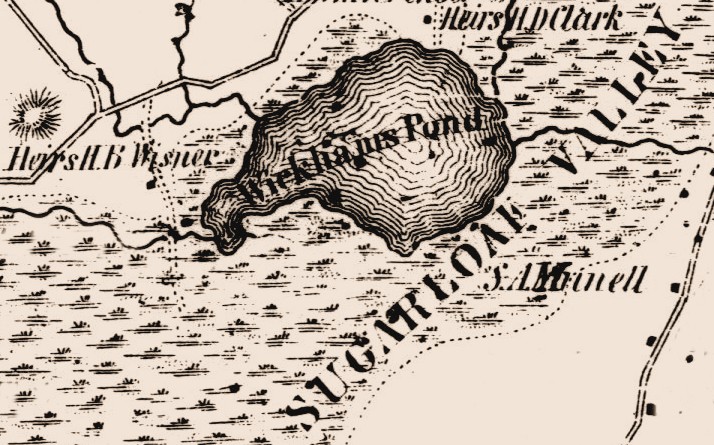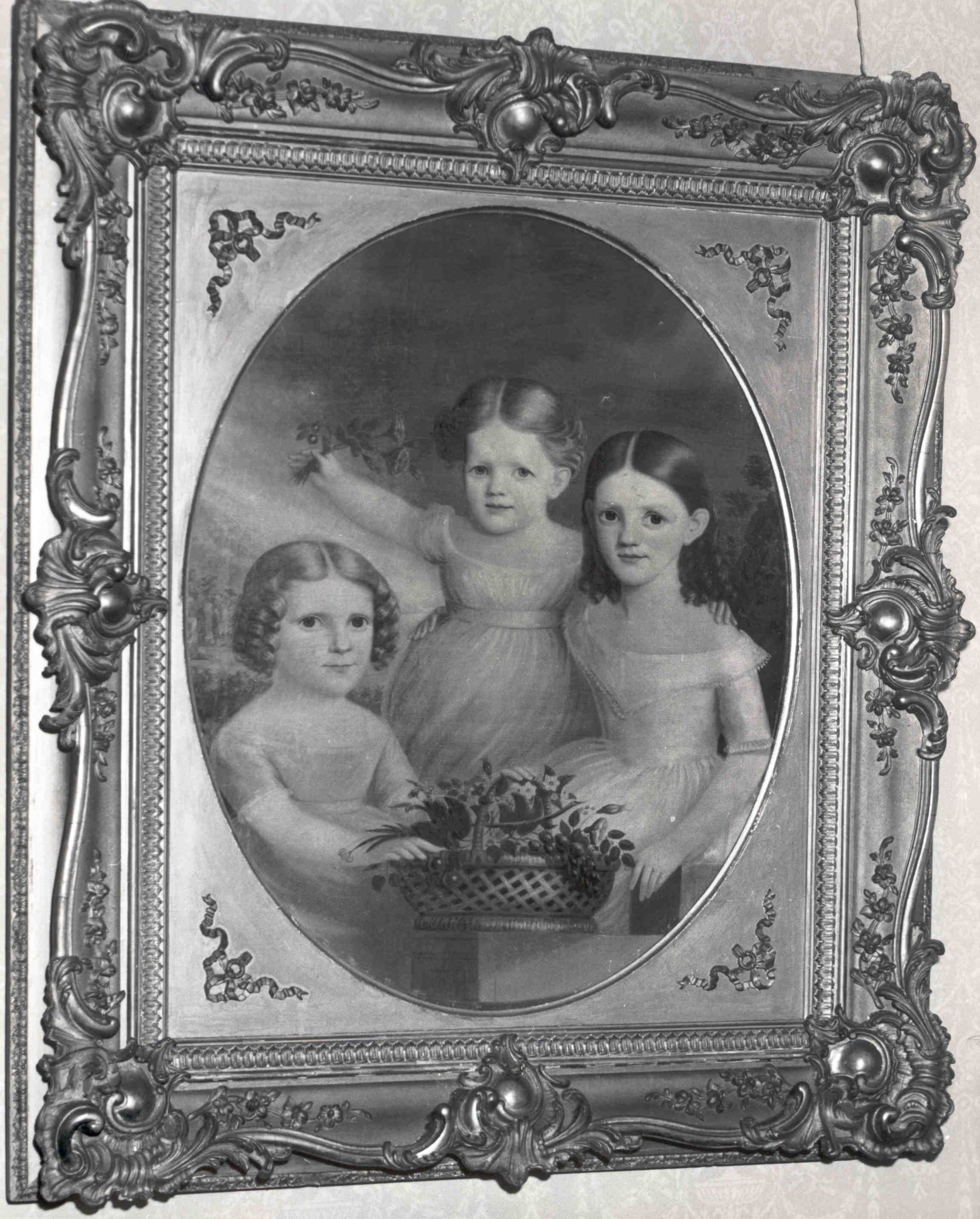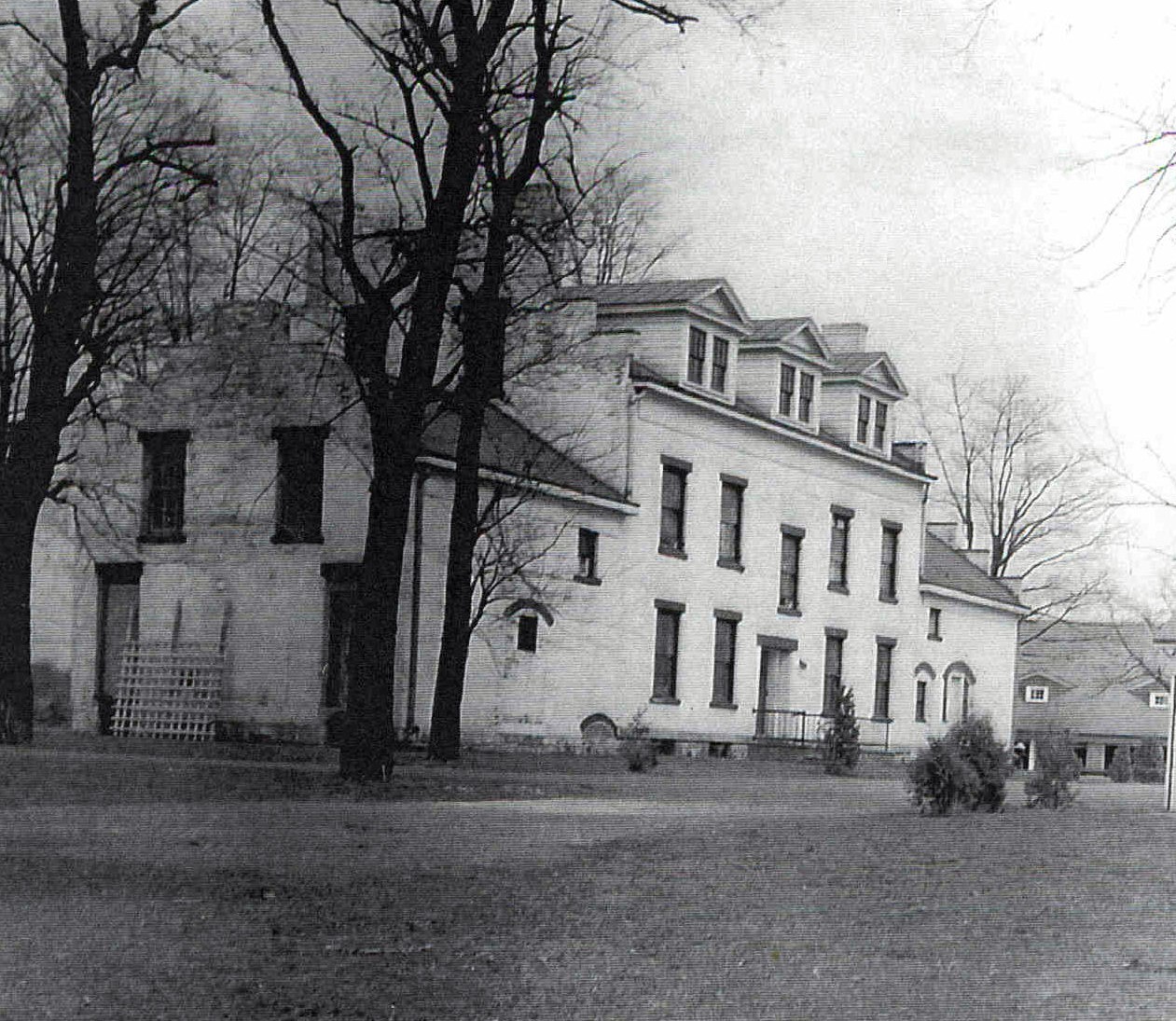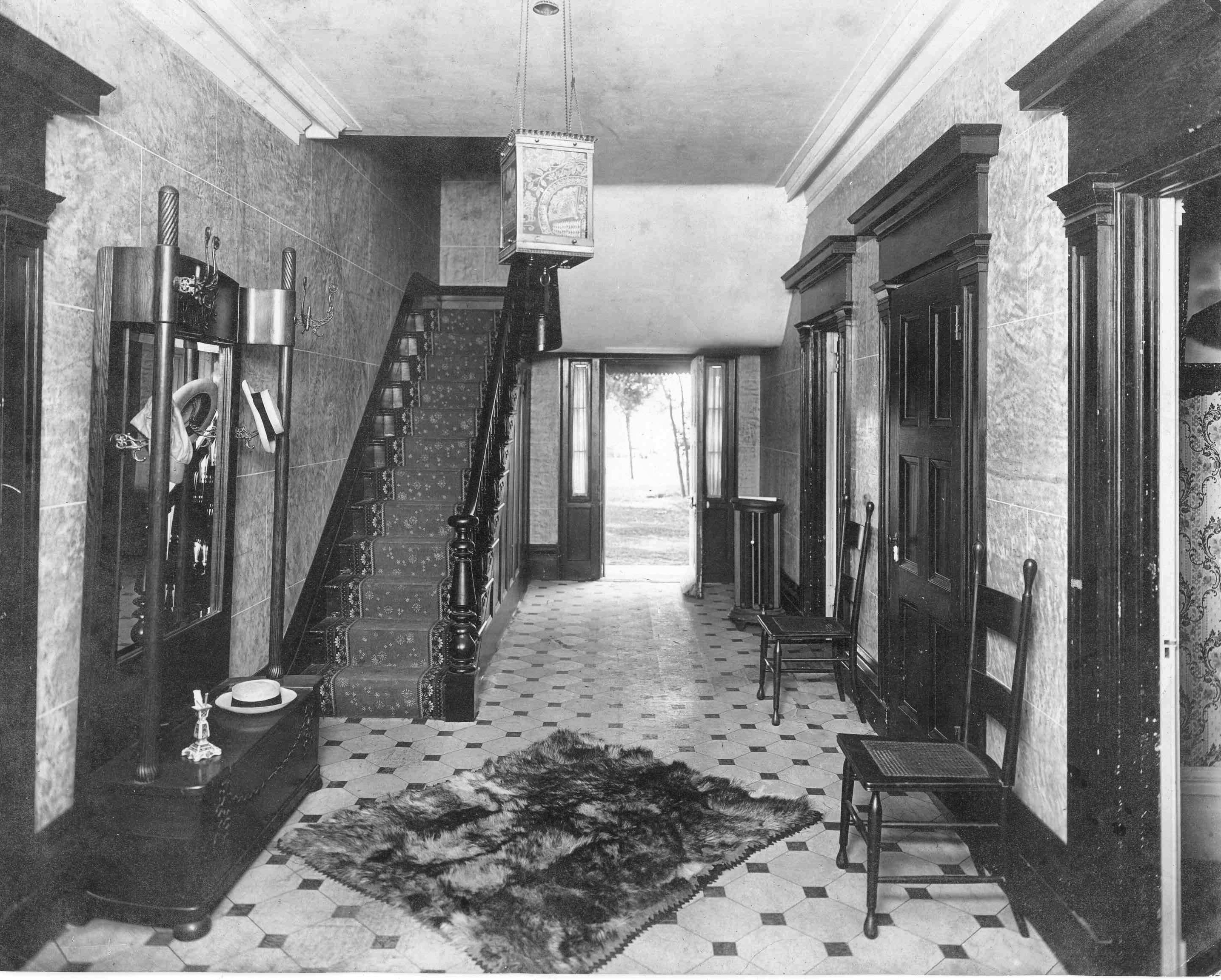
The original inhabitants of this section were Native Americans. By the time of contact with Europeans, the Minsi tribe of the Lenape cultural group were in residence. Numerous artifacts have been found in the area of Wickham Lake.
The land here became part of the Wawayanda Patent in 1702/3
Wickham Lake was known in early colonial days as "Perry's Pond" after Joseph Perry, who seems to have resided north of the lake and to have relocated to Vernon, NJ. The section of the valley to the south of the lake was part of 2,064 acres of land acquired Capt. John Wisner, Sr. (1718-1778) on Sept. 8, 1766. Wisner and his wife Ann sold one third of this vast tract, containing some of the area to the south and west of the lake, to William Wickham shortly thereafter. (1) The lands directly south of the lake stayed in the Wisner family, going to eventually to Henry Wisner III (Lt. Col. Henry), a son of John Wisner, Sr.
The original stone dwelling, which stood just in front of the present Mansion, was likely built by John Wisner before the Revolutionary War and was and occupied by him during the war. (2) Later it was the home of Gabriel Wisner ( 1784-1836) who passed on the property to his son, Henry Board Wisner (1815-1844)
An interesting story is told that there was a great deal of vitriol between Gabriel Wisner and his neighbor Mr. Burroughs, whose stone house still stands on King's Highway near the intersection of State School Road. A dispute arose (whether from money matters or political differences, the stories vary) and Mr. Burroughs took a shot at Wisner standing at the front of his house in the distance. Allegedly the bullet struck the door and not Mr. Wisner-- quite a shot, nonetheless, across what must have been at that time several fields.
That original stone house stood just in front of the structure called today "The Mansion", or the "Manor House". The Mansion was built by Henry Board Wisner (b.2/22/1815- d.6/29/1844) in 1841-42. All of the materials of which the home was built came from the property-- including bricks from the clay pit nearby. A brick yard and clay pits are shown on the 1875 map of Warwick. In its earlier days the home was called "Wisner Hall."
Henry Board Wisner was the son of Gabriel Wisner and Susannah Goldsmith, and married Mary Ann Wood. He was described by a descendant as being a "gentleman of singular amiability of character and disposition, of most neighborly instincts, and of such ample means that his kindly impulses were practically unchecked". He contributed greatly to the erection of the Sugar Loaf Methodist Church (3) He died within a few years of his beautiful home being finished, leaving a young family behind.
In March of 1852, Henry B.'s widow Mary Ann became the second wife of Thomas E. Durland (b. Sept. 7, 1813 d. March 5, 1891), who had relocated back to his home area from Illinois after his first wife passed away. He rented the property until purchasing it in 1863. He is shown as proprietor on the 1859 and 1863 maps of Warwick The east wing of the house was damaged by fire in 1863, and was immediately rebuilt. (4)
By 1903 the property had passed to a son of Thomas Durland and his first wife, (Mary Ellen Booth) Jesse Durland (b. Aug. 9, 1847 d. 1919), and the house is on the 1903 map is called "Durland Manor." Jesse died without children, so the farm passed to his nephew, Thomas Durland Landon (1865-1934). Landon sold it to the City of New York in 1912.
The house is listed in Appendix B (National Register Eligible Properties) of Warwick's Comprehensive Plan.
--------------------------------------------------------------
Source Notes:
1. p. 75+
Wisner, G. Franklin. The Wisners in America and Their Kindred. Baltimore, MD, Pub. by the author, 1918. Accessed on Google Books: http://books.google.com/books?id=TNlfAAAAMAAJ&dq=wisners%20in%20america&pg=PA77#v=snippet&q=wickham&f=false
2. "Early Days in Warwick" by W. B. Sayer, chapter II. Series appearing in the Warwick Advertiser Marcy 31-May 12, 1898.
3. Warwick Advertiser 9/5/1912, article by Mary Barrell.
4. Warwick Advertiser 11/7/1899 "Warwick's Stone Houses, Part 2" & 11/14/1899 (letter of Henry B. Saxe). Article full text in the Warwick Heritage Database.
Other sources:
p. 53 & 54 Records of the Dorland Family in America by John Dorland Cremer. Washington. Published by the author, 1898. Accessed on Archive.org: http://www.archive.org/stream/cihm_16917
A History of the Methodist Episcopal Church, Sugar Loaf, NY. by J. W. Naramore, 1899.
History of the Mid-Orange Correctional Facility:
The Wisner & Durland Farms at Wickham Lake

Section of 1850 Map of Orange County by J. C. Sidney
Showing "Heirs of H. B. Wisner" in residence.


The Manor House was built about 1840 by Henry B. Wisner, from bricks manufactured on the farm. Photo circa 1940s. Courtesy of the Dragonette family.
Phebe, Mary, and Elizabeth Wisner. Elizabeth was the eldest and Mary the youngest. These three daughters of Henry Board Wisner and Mary Ann Wood were painted shortly before their father died on June 29, 1844. The painting was done by a local artist, Milton McConnell, likely with the help of the well known portrait artist George Linen. The location of this original portrait is at present unknown. Two of the daughters-- Elizabeth and Mary-- married into the Barrell and Holbert families, once owners of what is today the Wright Family Farm, nearly adjacent to their father's home. Photo courtesy of the Warwick Historical Society

Hallway of manor house, likely prior to 1912.
Coutesy of the Warwick Historical Society
WARWICK VALLEY HISTORY, NY
Webpage by S. Gardner 2011 for Albert Wisner Public Library.
Please be polite and request permission for commercial use or before
copying this content to another site or publication.
